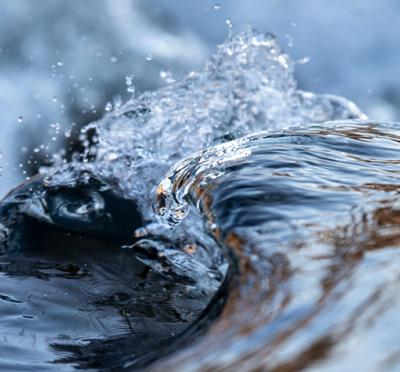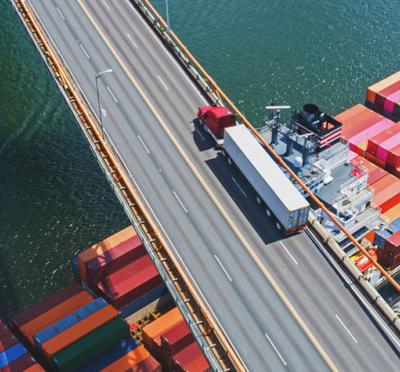For decades, scientists have predicted sea-level rise as a major outcome of the warming climate, bringing with it significant impacts to coastal communities. Yet, accurately predicting how quickly and by how much the world’s oceans will rise remains challenging because of many complex factors controlling how glaciers and sea ice melt.
“It’s much harder for a community to plan for 10 feet of sea-level rise than 1 foot of rise,” said Meagan Wengrove, assistant professor of coastal and ocean engineering at Oregon State University. “That’s a really big difference, and if we could say with more certainty how much a community might see, it will really help in the long run.”
As our oceans warm, the rate at which tidewater glaciers melt is in part influenced by small eddies of warm water lapping at glaciers’ near-vertical faces. Now, Oregon State University researchers are working to obtain the most accurate measurements ever recorded of the processes underlying this melt. Their research is supported by a $2.2 million grant from the National Science Foundation and a $1 million award from the Keck Foundation.
“Our project is only possible because of the strong collaboration between the College of Engineering and the College of Earth, Ocean, and Atmospheric Sciences,” said Wengrove, who has partnered with CEOAS scientists Jonathan Nash, professor of oceanography, Erin Pettit, professor of glaciology, and Eric Skyllingstad, professor of atmospheric sciences, as well as colleagues from Rutgers University and the University of Oregon.
“When warm ocean waters interact with a glacier, there is complex physics at play that increases melt rates,” said Wengrove, adding that most of the projections used to create models for sea-level rise are based on studies of how sea ice, swhich forms from ocean water freezing, melts.

elements during field work near LeConte Glacier in
Alaska.
“Sea ice is formed a lot differently than glacier ice,” she said. And it melts differently too. At a tidewater glacier face, plumes of freshwater melt rise up the ice because freshwater is less dense and more buoyant than the adjacent seawater. “You have all this really beautiful mixing occurring, right at that boundary, and we don’t really understand details of the processes because they’ve never been directly observed,” Wengrove said. “We’re trying to measure them as well as we can, and then update melt models so they can better predict how a glacier will melt into the future.”
However, getting close enough to these unstable ice cliffs to observe such small-scale dynamics has been difficult. “Because it’s such a dangerous place with calving events, there haven’t been very many measurements at that boundary,” Wengrove said.
The team is using an array of instruments mounted to and deployed from a robotic, rigid-hull inflatable boat custom-built by Nash, along with a team of engineers and students from both colleges. Team members will direct the robotic boats to make measurements of ice roughness and various ocean characteristics in order to understand their contribution to melt rate as close as possible to the submerged near-vertical face of LeConte Glacier, an actively calving glacier about 110 miles southeast of Juneau, Alaska.
“It is a bit like sending a rover to Mars,” said Nash, who is leading the engineering effort to have the robotic boat deploy remotely operated vehicles that then launch 4-foot-long “melt stakes” into the glacier to make direct measurements of melt. The ROVs also measure velocity, salinity, and temperature of the seawater right next to the ice-ocean boundary and listen to the sounds that the glacier makes underwater. The analysis of these data will help the team to better understand the processes that control ice melt and glacier stability at scales ranging from millimeters to tens of meters.
One finding that the team has uncovered so far is that tidewater glaciers may be melting at a significantly greater rate than previously known. One possible reason? Bubbles.
Glacier ice is formed as snow piles up over time. “That snow has all these little air pockets inside of it, and as it snows more and more, that initial snow gets compressed and starts moving down through the glacier and turns into ice,” Pettit said.
Those little bubbles can be squeezed between five and 20 atmospheres of pressure. When they migrate to the front of the ice where the tidewater interfaces with the ocean, they are often at much higher pressure than the ambient water. So, they end up exploding out of the ice.
“Glacial fjords are among the noisiest underwater places on the planet. When I first put a hydrophone in the water next to a tidewater glacier, I was overwhelmed by the intensity of the snap, crackle, and pop that the ice makes as it melts,” said Pettit, who discovered that bubbles were the source of these sounds approximately 15 years ago.
Recently, Wengrove and Pettit hypothesized that the outburst of energy as the bubbles are released might accelerate melting. In one experiment, they compared the melting of pristine bubble-free ice that they obtained from an ice carver in Eugene to that of real glacier ice and found that the latter melted about 2.5 times faster. They plan to quantify this phenomenon further using hydrophones and cameras in the field.
“I think we should try to challenge ourselves to think about what we should do with these types of results and how we can adapt as communities to things like sea-level rise,” Wengrove said. “The Earth could have been even warmer in the past than it is today, but given all the communities of people now living on the coasts, sea-level rise will affect us in unprecedented ways.”



